032c Takes on Buzzfeed: 5 Cats That Guard the Ancient City of Ephesos
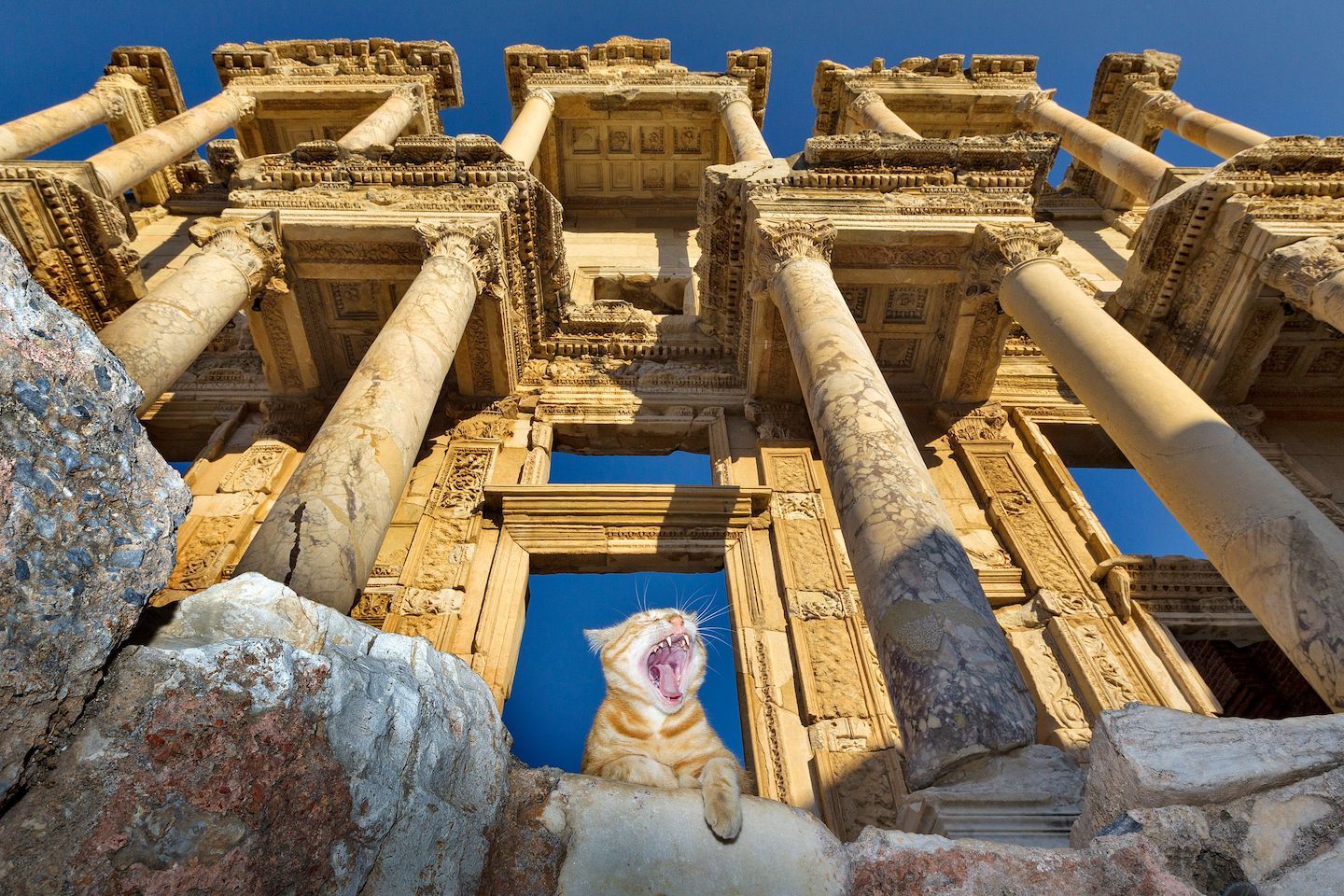
The ancient Greek city of Ephesos, on the Ionian coast of Western Turkey, is ruled by cats. Two millennia ago, Ephesos was a dense seaport with a complex system of government, a library, running water, a sewer system, two stadiums, restaurants, brothels, and a cemetery for gladiators. The Gospel of John might have been written in Ephesos, and St. Paul penned his letters to the Corinthians here. Some believe it’s where Mary, the mother of Jesus, died. Though today’s only permanent residents of this lost metropolis – only 15 percent has been excavated since the Austrians began digging here 120 years ago – are the cats that dominate the antique remains like the last species in a world far away in time.
The book CATS OF EPHESOS, by archeologist Sabine Ladstätter and photographer Lois Lammerhuber, combines the history of the mythical site with recent images of the cats that inhabit it. “The pictures were supposed to show the ancient city,” says Ladstätter, “but the cats were present in every frame.” They’re not recent arrivals, either. The oldest evidence of wild cats in Ephesos are bones found during excavations on the Çukuriçi H.yük from the late seventh millennium B.C. Roman domestic cats were found in the theater, St. Luke’s grave, and the Vedius Gymnasium; a kitten lost its life here in a Turkish well in the 15th century A.D. Like lissome-bodied phantoms of the past, today’s cats of Ephesos are aloof to the world around them yet guardians of the secrets unknown in its ruins.
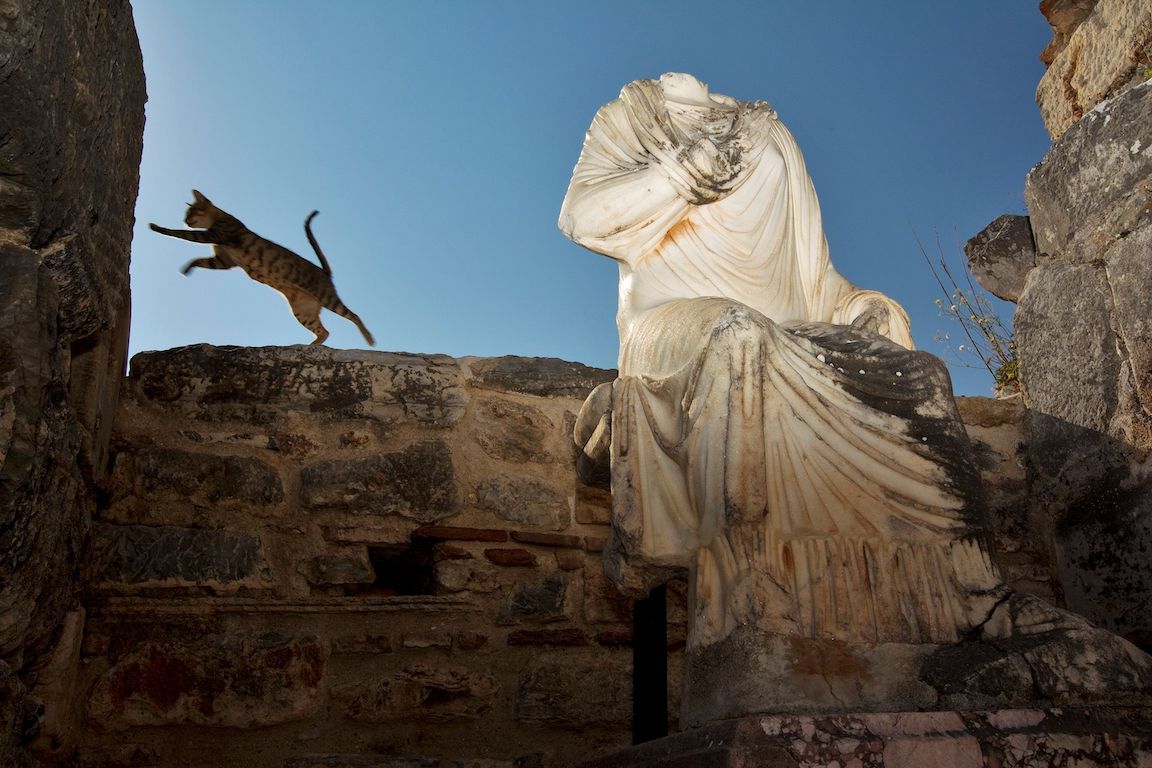
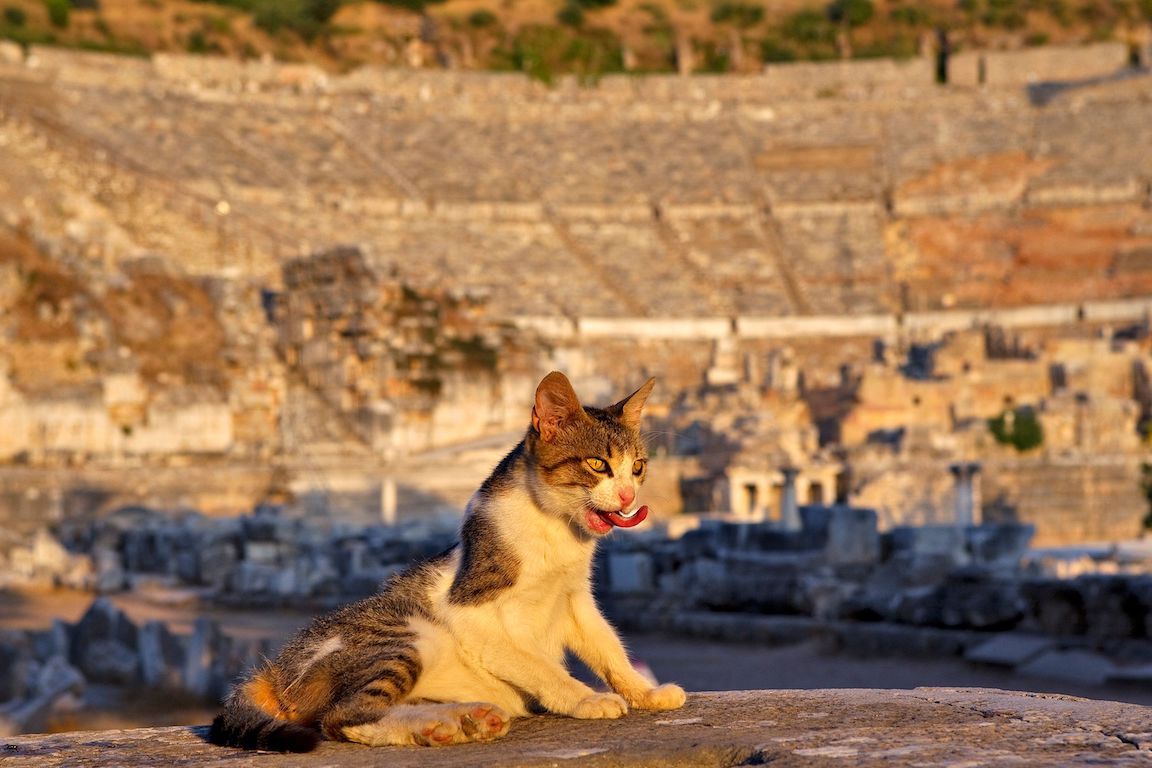
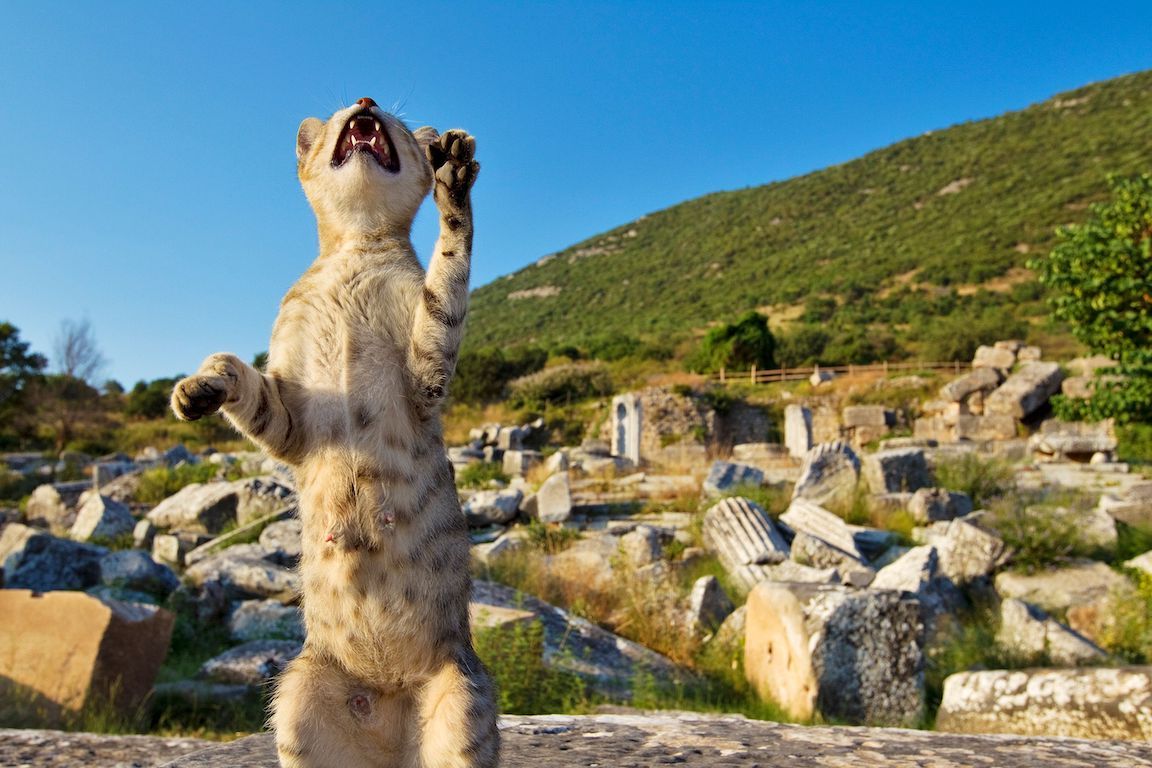
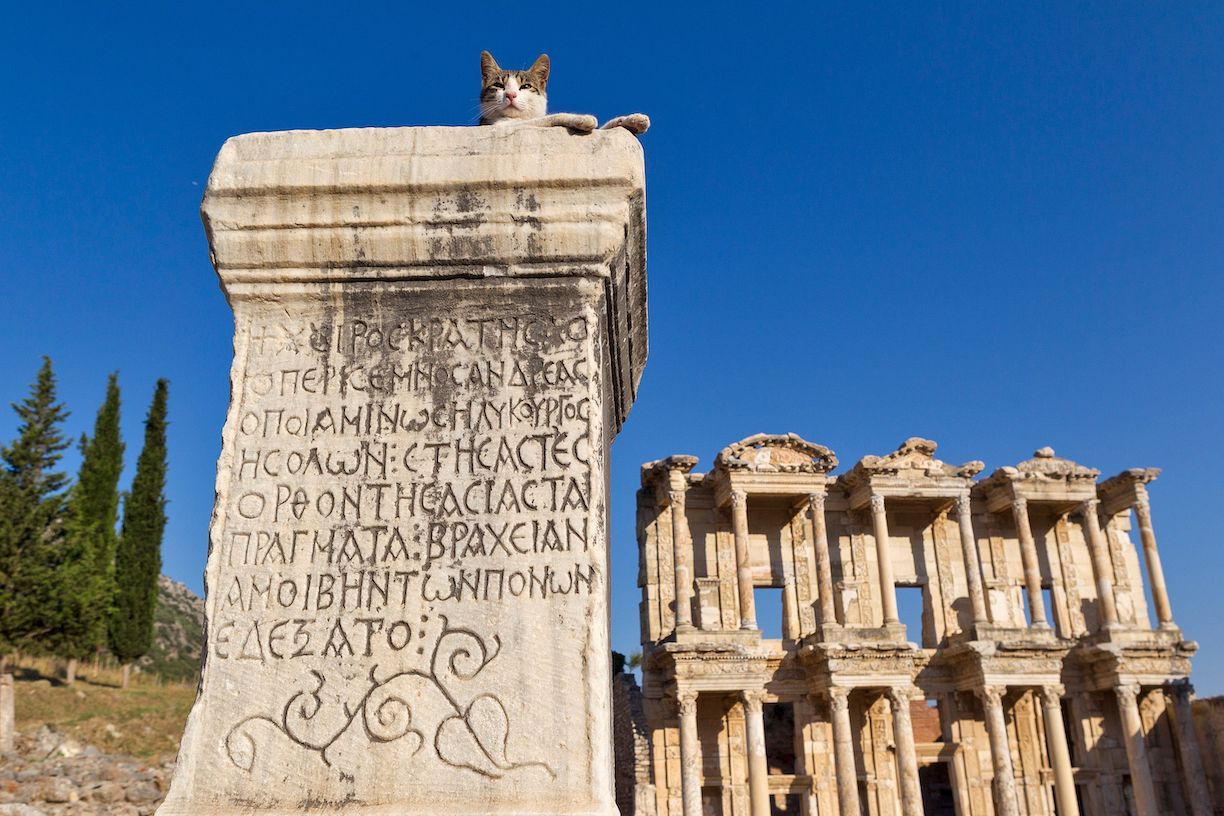
Cats of Ephesos is published by Edition Lammerhuber (Baden, Austria, 2013).
